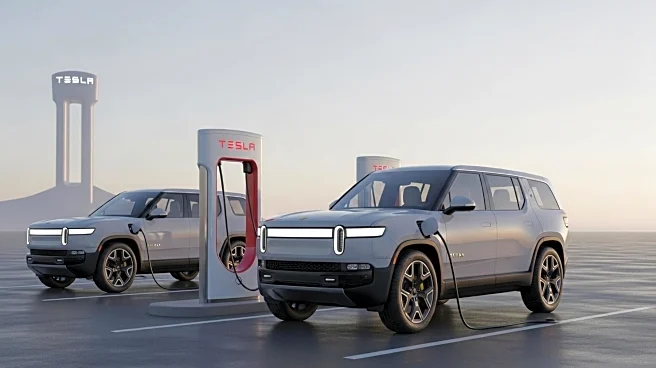What's Happening?
In 2024, Ford Motor Company CEO Jim Farley earned $27.6 million, making him the second highest-paid automotive CEO in the United States. This places him just behind General Motors CEO Mary Barra, who earned $29.8 million. The earnings for both executives increased compared to the previous year. The compensation figures include base pay, bonuses, incentive plans, stock option gains, pension benefits, and deferred pay. The report highlights the significant earnings of automotive industry leaders, with a focus on the top earners in the sector. Notably, Nvidia CEO Jensen Huang topped the overall list with $197.6 million, while Uber Technologies CEO Dara Khosrowshahi earned $114.9 million.
Why It's Important?
The high earnings of automotive CEOs like Jim Farley and Mary Barra underscore the significant financial rewards associated with leading major automotive companies. These figures reflect the competitive nature of executive compensation in the industry, which is influenced by factors such as company performance, stock market dynamics, and strategic leadership. The substantial earnings also highlight the importance of the automotive sector in the U.S. economy, as these companies play a crucial role in manufacturing, employment, and technological innovation. The compensation packages are indicative of the value placed on leadership that can navigate the complexities of the automotive market, including the transition to electric vehicles and the integration of advanced technologies.
What's Next?
As the automotive industry continues to evolve, the focus on executive compensation may intensify, particularly in light of the ongoing shift towards electric vehicles and sustainable practices. Companies like Ford and General Motors are likely to continue investing in new technologies and expanding their electric vehicle offerings, which could impact future earnings and compensation structures. Additionally, the industry may face increased scrutiny from stakeholders regarding the alignment of executive pay with company performance and long-term strategic goals. The competitive landscape may also drive further changes in leadership strategies and compensation models.













